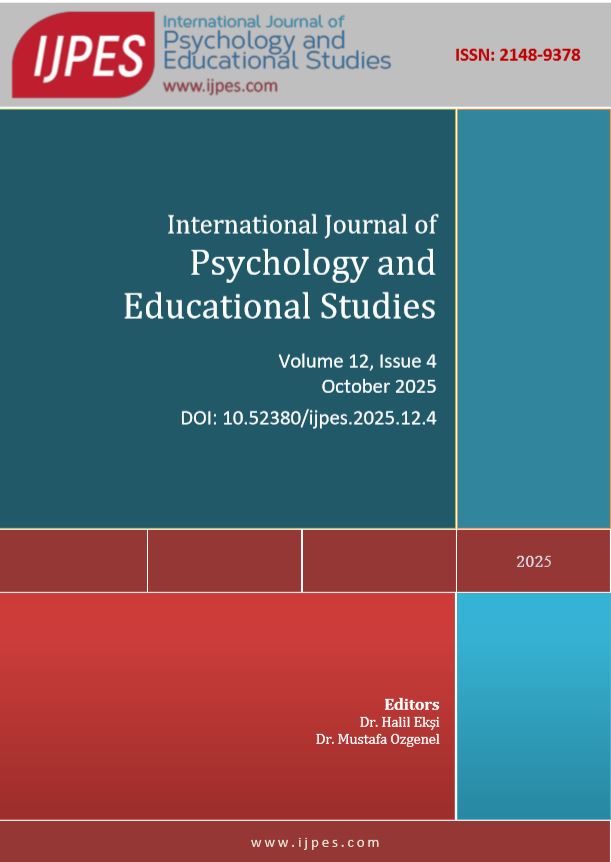Pre-Service Mathematics Teachers’ Understanding of Quadrilateral Definitions and Hierarchical Relationships: A Van Hiele Perspective
DOI:
https://doi.org/10.52380/ijpes.2025.12.4.1484Abstract
This study aims to examine pre-service elementary mathematics teachers' knowledge of quadrilaterals and evaluate their understanding within the framework of Van Hiele's Geometric Thinking Levels. In particular, the study investigates how pre-service teachers define quadrilaterals and establish relationships between different types of quadrilaterals and analyzes whether these processes differ across grade levels. The topic of quadrilaterals holds a crucial role in geometry instruction, as it requires not only familiarity with geometric properties but also a deep comprehension of hierarchical relationships among quadrilaterals. This highlights the direct impact of pre-service teachers' conceptual knowledge on students' geometry learning processes. The research was conducted using the cross-sectional approach within the general survey model. The study group consisted of 132 pre-service teachers enrolled in the 1st, 2nd, and 3rd years of the elementary mathematics teacher education program. Data were collected using an assessment form consisting of 12 multiple-choice questions, developed based on a literature review and expert opinions. This assessment tool was designed to measure pre-service teachers' ability to define quadrilaterals, establish relationships between them, and organize these relationships within a hierarchical structure. The analysis revealed that pre-service teachers primarily recognize quadrilaterals through prototypical representations, yet they struggle to define special cases and establish hierarchical relationships between quadrilaterals. Notably, the hierarchical relationship between deltoids and rhombuses was frequently overlooked. Although some conceptual gains were observed with increasing grade levels, no significant improvement was detected in terms of relating different types of quadrilaterals. The findings suggest that teacher education programs should incorporate more constructivist approaches and integrate visual materials into instructional practices to enhance pre-service teachers' knowledge of quadrilaterals. This study is expected to contribute to both the literature on quadrilateral instruction and the development of teacher training programs.
Downloads
Published
How to Cite
Issue
Section
License
Copyright (c) 2025 International Journal of Psychology and Educational Studies

This work is licensed under a Creative Commons Attribution-NonCommercial-NoDerivatives 4.0 International License.


